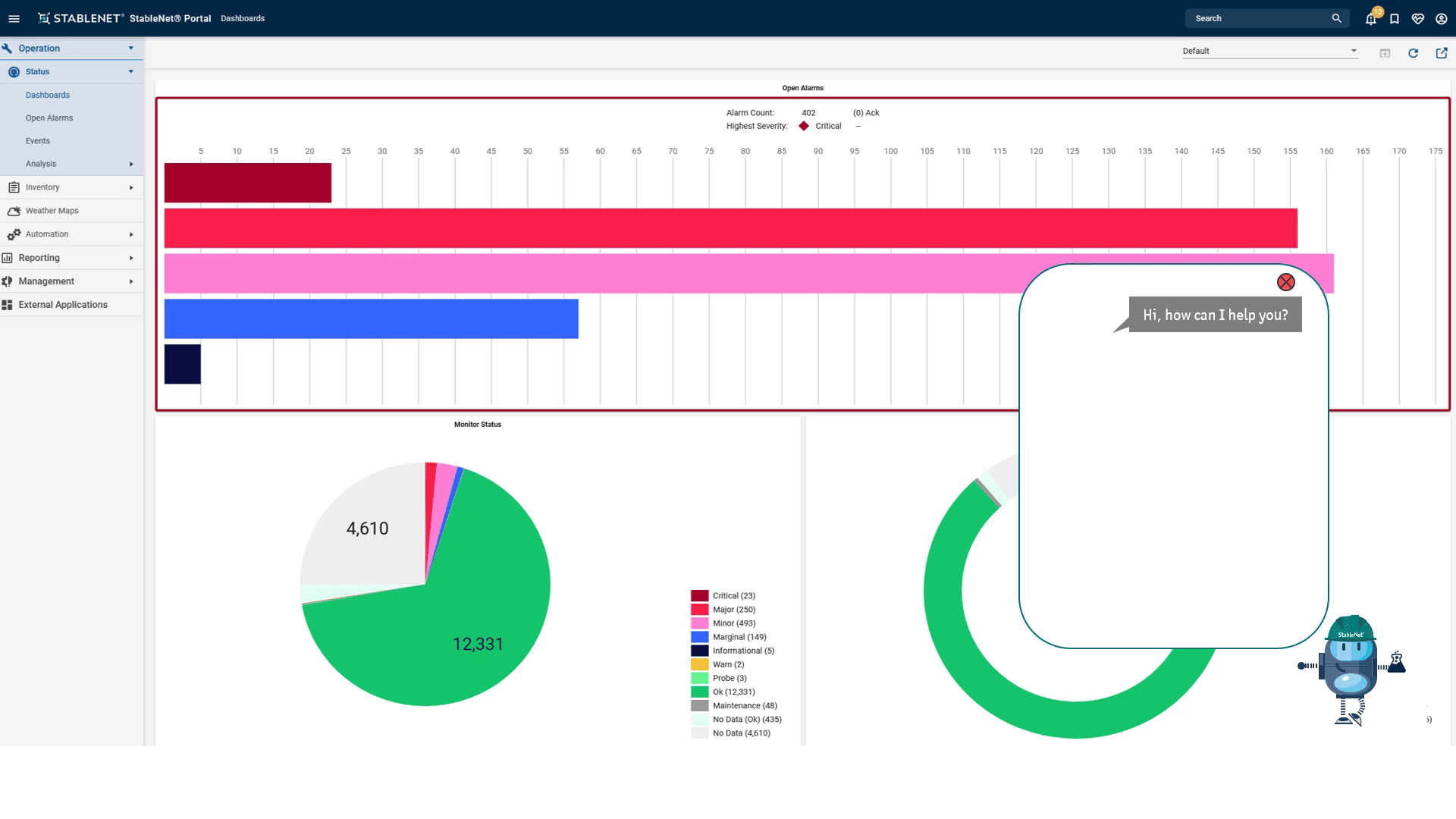
Regular posts on all things StableNet® related from a sales, techie, or marketing perspective

Research & Vision
Network Management and Operations in the Age of Large Language Models
Definition of basic key terms in generative AI
Before looking at applications of genAI in the field of network operations and management, let’s quickly define some key terms.
Basically, genAI specifies a category of AI algorithms that generate new content, such as text or images. Generative refers to algorithms that create new data points or sequences based on previous data, which were not present in their training data but are similar or relevant to it.
This includes a variety of techniques, such as Generative Adversarial Networks (GANs) and Variational Autoencoders (VAEs).
Large Language Models (LLMs) are a subset of genAI that are specifically designed to understand, generate, and manipulate human language. They are trained on large amounts of text data and excel at a variety of language tasks, including translation, summarization, Q&A, and content creation. Models such as GPT (Generative Pretrained Transformer) and BERT (Bidirectional Encoder Representations from Transformers) are examples of natural language processing (NLP) techniques. NLP is a field that intersects between AI and linguistics, focusing on the interaction between computers and human language. It includes various models and techniques, not limited to genAI, for understanding and manipulating human language. NLP has a wide range of applications, including text classification, sentiment analysis, language translation, and speech recognition. It involves not only generating language but also understanding, interpreting, and analyzing it.
Applications of genAI in the field of network operations and management
From a network perspective, genAI has huge potential for a wide range of applications and activities, including report generation, data analysis, network automation, resolve network outages, optimizing business processes, and many more.
Some applications can already be implemented out of the box with the existing and pre-trained models. GenAI can act as an assistant for network operators.
In simple cases, it can be used to respond to outage tickets, connecting users to commonly experienced problems. For this case, genAI becomes the backbone of an auto-response system, communicating with users on one side and the operations team on the other side.
GenAI can also assist in data analysis. This can be either time series such as interface utilization to find anomalies or predict the future for capacity estimations, but also log files to find which can be very time consuming using traditional analysis methods. Over time, genAI can detect faults, gather customer feedback, create reports, and take action on those reports with minimal human intervention.
Thinking even further, genAI can run a network itself by diagnosing faults or responding to customer requests for bandwidth. It can execute the DevOps process by creating its own patches or code snippets to resolve issues, making the network more efficient, resilient, and restorative. It can optimize networks by simulate various scenarios to identify the most efficient configurations under different conditions. This can help in optimizing bandwidth allocation, reducing latency, and improving overall performance.
In predictive maintenance, genAI algorithms analyze network data to predict potential failures or identify maintenance needs before they escalate into critical issues. This proactive approach minimizes downtime and enhances network reliability.
In the realm of security, genAI offers novel solutions for identifying and responding to cyber threats. By generating realistic network attack scenarios, genAI can also help in training systems to detect and counteract sophisticated cyber threats more effectively.

(Image created with ChatGPT)
Improving the outcome quality of genAI
However, some applications and use cases require further development and adaption to their respective requirements.
If pre-trained models do not perform as expected, additional information can be directly injected with the input prompts, providing details, or giving context. This relatively basic approach can already yield significant improvements with minimal effort.
Retrieval-Augmented Generation (RAG) can also help improve output quality and reduce hallucination. RAG is an approach that combines a retriever system, which searches for text snippets in a provided database, with an LLM, which generates an answer using the information from these snippets.
On the other hand, fine-tuning is the process of taking a pre-trained foundation model and re-train it further with additional specific data to adapt the model’s parameters and weights. This process typically requires appropriate hardware and is therefore more complex to implement.
Benefits and Challenges of genAI
The integration of generative AI in network operations can bring significant benefits.
Efficiency is markedly enhanced, as AI-driven systems can automate routine tasks and optimize network performance continuously.
Accuracy is another key advantage with AI algorithms capable of identifying patterns and anomalies that might be missed by human operators.
Additionally, generative AI facilitates proactive network management, allowing operators to anticipate and mitigate potential issues before they impact network performance. This not only reduces the response time but also frees up valuable human resources for more complex tasks.
However, the adoption of generative AI in network operations is not without challenges.
Data integrity, privacy and security are paramount concerns, as the use of AI requires access to large volumes of sensitive network data.
The technical complexity of integrating AI into existing network infrastructures can also be daunting, requiring significant investment and expertise.
Furthermore, there is a growing need for skilled professionals who can effectively manage and interpret the outputs of AI systems, ensuring that they align with organizational goals and industry standards.
What to expect from generative AI in the next years


Dr. Stefan Kremling
Senior R&D Engeneers @ Infosim® GmbH & Co. KGAs a R&D Engineer, Stefan is working on several national and international research projects with the focus on the future of automated network & service management. Before joining Infosim® in 2022, he was working as a R&D Engineer at several positions in research institutes as well as industry. With his strong background in Physics, where he holds a PhD from University of Würzburg, he is mainly responsible for all topics relating quantum information processing and technology.

Software
Made in Germany
